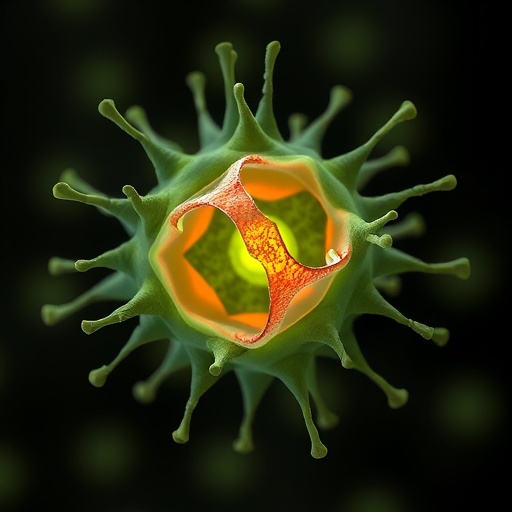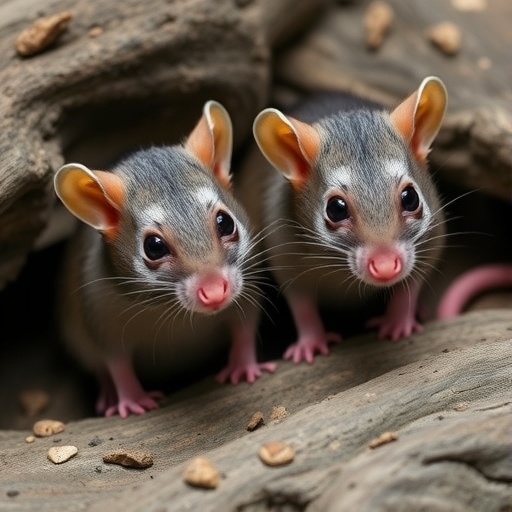In a groundbreaking advancement poised to reshape the landscape of reproductive medicine, researchers have unveiled a novel approach that harnesses the synergistic power of decellularized testicular scaffolds combined with extracellular vesicles derived from human semen. This innovative strategy demonstrates promising potential to enhance the survival and differentiation of spermatogonial stem cells (SSCs), a critical frontier for treating male infertility and spermatogenic failure.
At the heart of this pioneering research lies the concept of decellularized scaffolds—complex biomimetic structures meticulously stripped of cellular components while preserving the intricate extracellular matrix (ECM) architecture. These scaffolds serve as a natural niche, replicating the testicular microenvironment required for SSC adhesion, proliferation, and maturation. The ability to retain the ECM’s biochemical and mechanical cues offers a sophisticated platform that supports the functional behavior of SSCs beyond the limitations of traditional culture systems.
.adsslot_gl657uRne9{ width:728px !important; height:90px !important; }
@media (max-width:1199px) { .adsslot_gl657uRne9{ width:468px !important; height:60px !important; } }
@media (max-width:767px) { .adsslot_gl657uRne9{ width:320px !important; height:50px !important; } }
ADVERTISEMENT
The methodology implemented by the research team commenced with the decellularization of rat testicular tissue using detergent-based techniques optimized to efficiently remove cellular remnants. Subsequent analyses—including histological staining, immunohistochemistry, DNA quantification, and high-resolution scanning electron microscopy—confirmed the successful clearance of native cells while impeccably preserving ECM components. The delicate balance between cell removal and matrix integrity is critical, as it establishes the foundation for effective scaffold performance in supporting SSC biology.
SEVs were meticulously isolated from human seminal plasma utilizing ultracentrifugation protocols that safeguard vesicle integrity and purity. Characterization studies confirmed the size distribution and morphology of these vesicles, as well as their competence to be taken up by testicular cells in vitro. This uptake is essential, demonstrating the vesicles’ active role in delivering molecular signals that potentially drive SSC behavior within the scaffold niche.
Despite the encouraging advances, the study noted a lack of progression to meiotic differentiation, as evidenced by the absence of SCP1 expression, a critical meiosis marker. This outcome suggests that while the integrated system promotes survival and partial differentiation, further refinement and supplementary cues may be necessary to achieve complete spermatogenesis ex vivo. The challenge of recapitulating the full complexity of the testicular niche remains a frontier for ongoing investigation.
This research contributes a seminal step forward by demonstrating that the dual strategy of decellularized scaffolds augmented with bioactive vesicles can significantly improve SSC culture outcomes, a vital prerequisite for future fertility restoration therapies. The potential applications span from developing advanced in vitro spermatogenesis platforms to crafting implantable biomaterials tailored for regenerative purposes in patients suffering from spermatogenic dysfunction.
The implications of these findings extend beyond male reproductive health alone. The approach exemplifies an elegant convergence of tissue engineering and extracellular vesicle biology, highlighting how biomimetic matrices combined with cell-derived signaling entities can synergistically dictate stem cell fate. This paradigm may serve as a blueprint for similar regenerative strategies in other tissues and organ systems.
Notably, the choice of human SEVs as a biochemical enhancer reflects a translational vision where autologous or donor-derived vesicles could be harnessed for personalized medicine. By leveraging naturally occurring communication vehicles, researchers can mitigate challenges associated with synthetic growth factors, potentially improving biocompatibility and functional outcomes in clinical applications.
Furthermore, the comprehensive validation techniques utilized to confirm ECM preservation and cellular clearance set a rigorous standard for scaffold fabrication protocols. This ensures that the resulting biomaterials provide a truly supportive environment capable of guiding delicate stem cell processes without inciting adverse immune reactions or fibrotic responses.
Looking ahead, future investigations are likely to explore the incorporation of additional molecular cues, co-culture systems, and bioreactor technologies to drive SSCs through complete spermatogenic cycles. The integration of mechanical stimuli and fine-tuned biochemical gradients may unlock the elusive transition from early differentiation to full maturation, ultimately enabling the generation of functional spermatozoa in vitro.
In conclusion, this study spotlights a transformative approach to male fertility restoration by bridging extracellular matrix biology with extracellular vesicle-mediated signaling. Its pioneering insights pave the way for developing next-generation regenerative therapies capable of reinstating spermatogenesis in infertile individuals, holding profound promise for addressing a widespread and impactful reproductive health challenge.
Subject of Research: Combination of decellularized testis scaffolds and human semen-derived extracellular vesicles to enhance survival and differentiation of spermatogonial stem cells.
Article Title: The synergic impact of decellularized testis scaffold and extracellular vesicles derived from human semen on spermatogonial stem cell survival and differentiation.
Article References:
Afshari, F., Alaee, S., Dara, M. et al. The synergic impact of decellularized testis scaffold and extracellular vesicles derived from human semen on spermatogonial stem cell survival and differentiation. BioMed Eng OnLine 24, 94 (2025). https://doi.org/10.1186/s12938-025-01424-2
Image Credits: AI Generated
DOI: https://doi.org/10.1186/s12938-025-01424-2
Tags: biomimetic structures in cell culturedecellularized testicular scaffoldsextracellular matrix architectureextracellular vesicles in reproductive medicineinnovative approaches to spermatogenic failureintercellular communication in stem cellsmale infertility treatment innovationsregenerative medicine in male reproductive healthsperm maturation pathwaysspermatogonial stem cells differentiationstem cell growth enhancementtesticular microenvironment replication






